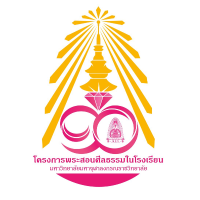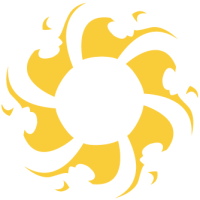Empowering Creativity and Innovation: The Impact of Starfish Makerspace in Three Thai Schools

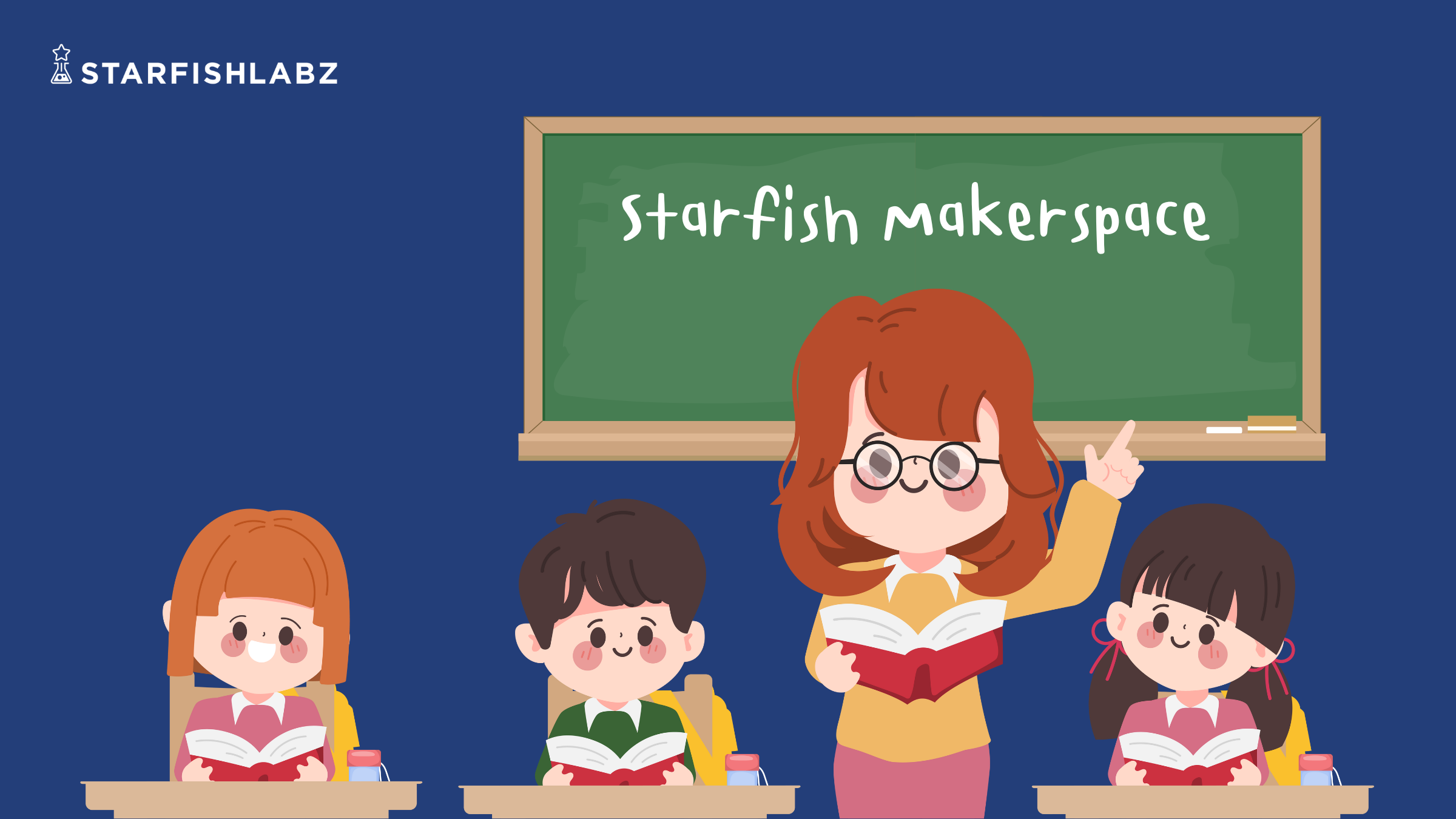
What is Starfish Makerspace? It is an educational method which adopts STEAM as its foundation. It was started in 2017 by Starfish Education, a non-profit organisation. It aims to integrate interdisciplinary knowledge such as science, technology, engineering, art, and mathematics. It emphasises the application of both creativity and knowledge to solve real-life problems. By doing this, it allows the students to connect all their knowledge with their own experiences, which are not limited to just one field of study. This will enable them to choose what they like and what they are most interested in, making it easy for them to apply their skills to the real world and their daily lives.
The learning can be accomplished through a systematic process known as the STEAM Design Process. This 5-step process begins by asking questions about the problem (asking), figuring out how to solve it (imagining), then creating a detailed plan (planning), creating a solution (creative), and evaluating how the process went and creating a new and better solution (rethink & redesign). The process develops and allows learners to be thinkers, problem solvers, and rationalists in their actions, an integral concept in the daily use of the real world.
Starfish Makerspace fosters essential skills such as:
- Critical Thinking
- Collaboration
- Communication
- Creativity
It also fosters social-emotional learning skills such as:
- Self-Awareness
- Self-Management
- Responsibility and Decision Making
- Relationship Skills
- Social Awareness
Making an Impact in Thai Schools In three Thai schools, the impact of Starfish Makerspace has been extraordinary:
Wat Wimuttayaram School, Bangkok:
Wat Wimuttayaram School is located at the Wat Wimuttayaram Temple in a relatively poor and urban area, with most parents being self-employed and most children being of mixed faith. There are 16 teachers and 324 students. (5-12)
At the school, Starfish Makerspace has been integrated into their curriculum, and it is present in almost all subjects, with children from kindergarten up to grade six undergoing it. At Wat Wimuttayaram School, the content is taught mainly in Thai. However, there is also a bilingual program where lessons are taught in English, and the students try to the best of their abilities to communicate with their peers and teachers. By putting students into uncomfortable situations and making it practical, they engage in conversations in English and learn and adapt according to their surroundings. This leads to a faster and more advanced rate of developing English to a greater capacity.
Makerspace is used as a creative outlet to convey their understanding of the content taught by the teachers. This can be shown in any form, and they are provided with the necessary materials and tools in the classroom (e.g. a cardboard model or a drawing). Materials such as milk cartons and plastic bottles are often recycled and reused. The process is self-directed, with the students in charge of acquiring the materials. The teachers oversee the whole process and ensure that the entire process is being undergone in an orderly and safe environment. This process is a lot more interactive and a more hands-on way for children and ensures that the knowledge is learnt and retained long term by doing something they like and are interested in.
Wat Bang Phlat School, Bangkok:
Wat Bang Phlat School is located at the Wat Bang Phlat Temple, with the surrounding community somewhat poor, with most parents working as merchants in markets or daily labourers. The children are predominantly Buddhist. There are 23 teachers and 346 students. The school accepts children from kindergarten to grade six. (5-12)
The school follows the ‘Bang Phlat Model’, which is their curriculum based on a mix of the Thai way, the Buddhist (Dharma) way and the Democratic way. It places heavy emphasis on morals and ethics and teaches children to be exemplary roles beyond the classroom, as some children do not have parental guidance at home to guide them. The school primarily follows the Core Thai curriculum, and the makerspace is not fully integrated and depends on the class. It is implemented on certain days, such as Tuesday, and students can use the space for 2 hours.
Makerspace is integrated into multi-subject sessions (e.g. Thai and science). This opens up more cohesive lessons, allowing children to understand and register content more efficiently and quickly. This is also a lot more productive for the teachers as they can teach more content while keeping the lessons not too condensed and, instead, more light and child-friendly. Much like Wat Wimuttayaram School, children are then expected to use the makerspace to convey their understanding with various materials and tools at their disposal in the classroom. Most materials are also recycled and reused. This allows the child to come up with their interpretation of the topic and encourages creativity and free thinking.
Baan Pla Dao School, Chiang Mai:
Baan Pla Dao School services marginalised students and families, including the local Thai communities and hill tribes near the Mae Teng district. The school accepts children from kindergarten to primary school (KG-P6).
The school follows a curriculum where students learn through a project-based learning approach and a literacy programme in both Thai and English (Thaiglish), a form of English mixed with Thai, started and championed by the late Dr Richard P Haugland, founder of Starfish Education Foundation, affectionately referred to as ‘Lung Dick’ by the children. The school aims to promote skill development and student competency with educational innovation focusing on providing learners with sustainable 21st-century skills. The school follows project-based learning (PBL), where systems identify problems in their community, figure out how to solve them, create a detailed plan, create a solution, and evaluate how the process went and create a new and better solution. This allows students to take control of their learning and self-direct themselves, and in doing so, become more independent.
When using the In Makerspace, the students can create projects based on their interests and preferences. Makerspace can also help support the PBL curriculum by making ‘prototypes’ or a ‘medium’ for the students to convey their ideas better. However, along with PBL, makerspace is also integrated into each subject and has a separate time for it. Students can choose to do what they want. The activities range from robotics to cooking, and the school uses their budget to the best of its ability to cater to the student’s needs and optimise their learning. This approach ensures the children do what they are interested in, encourages them to follow their passions, and equips them with 21st-century skills necessary for the foreseeable future.
The Impact on Students
The introduction of Starfish Makerspace has ignited a passion for learning among many students. With its organised, systematic process, students learn to become confident and creative problem-solvers. Students learn how to collaborate and work with one another. They learn to consider and understand different perspectives, communicate effectively and work towards a common goal.
This essential skill will be prevalent in their future academic, corporate, and social lives. Through makerspace, students learn to be fearless risk-takers and exemplary role models of society. They develop critical emotional intelligence skills. They can accept and understand responsibility and decision-making, self-management, self-awareness, social awareness, and relationship skills; all necessary skills to communicate and collaborate with people, impacting their social, corporate, and academic lives.
Rather than throwing students headfirst into the unknown future by following the traditional curriculum, which does not all account for 21st-century skills applicable to real-world scenarios but, instead, based on copying the writing on the board and memorising information, makerspace ensures they are well-equipped for whatever the future may bring with the essential qualities to ensure their relevance in both the corporate world and their daily lives.
Beyond the Schools: Inspiring the Future of Education.
What started as a renovation of the ‘Baan Pla Dao School’ curriculum, Starfish Makerspace, has now spread all over Thailand. More than 400 schools and 120,000 students have now had makerspace integrated in some way into their lives, sparking a movement towards a more creative and interactive approach to learning in Thailand. As more schools adopt this system, education in Thailand will only progress further and take giant leaps forward, preparing students to become creative individuals, problem-solvers and innovators of the future who are ready to take on the world.
Starfish Makerspace คืออะไร?
Starfish Makerspace เป็นวิธีการเรียนรู้ ที่มีรากฐานจาก STEAM เริ่มใช้โดย Starfish Education วิสาหกิจเพื่อสังคม ในปี 2017 ฝึกให้นักเรียนได้ใช้ความรู้หลายด้านประกอบกันทั้งวิทยาศาสตร์ , เทคโนโลยี วิศวกรรมศาสตร์ , ศิลปะ และคณิตศาสตร์ เพื่อสร้างทักษะความคิดสร้างสรรค์และนำมาแก้ปัญหาในชีวิตประจำวัน ซึ่งจะทำให้เด็กเชื่อมโยงความรู้เข้ากับประสบการณ์ส่วนตัว และไม่ปิดกั้นตนเอง สุดท้ายจะส่งผลให้พวกเขารู้ว่าชอบอะไร สนใจสิ่งไหนเป็นพิเศษ ซึ่งเป็นผลดีในอนาคตต่อชีวิต และการทำงาน
ขั้นตอนการเรียนรู้ ต้องใช้ STEAM Design Process มีทั้งหมด 5 ขั้น โดยเริ่มจากถกเถียงปัญหา (ตั้งคำถาม) หาวิธีแก้ปัญหา (จินตนาการ) ทำแบบแผนที่เฉพาะเจาะจง (วางแผน) คิดค้นลงมือทำ (กระตุ้นความสร้างสรรค์)และประเมินขั้นตอนทั้งหมดอีกครั้ง เพื่อทำให้ดีขึ้นกว่าเดิม (คิดใหม่ และออกแบบใหม่)ขั้นตอนทั้งหมดนี้ จะพัฒนาผู้เรียนให้เป็นนักคิด นักแก้ปัญหา และเป็นคนมีเหตุผลกับการกระทำของตนเอง ซึ่งจำเป็นกับโลกปัจจุบัน Starfish Makerspace สร้างให้เกิดทักษะชีวิต , ทักษะทางอารมณ์และสังคม ดังนี้
- การคิดวิเคราะห์
- การทำงานร่วมกับผู้อื่น
- การสื่อสาร
- ความคิดสร้างสรรค์
- การเข้าใจตนเอง
- การบริหารจัดการตนเอง
- ความรับผิดชอบและการตัดสินใจ
- การบริหารความสัมพันธ์
- การตระหนักรู้ทางสังคม
Starfish Makerspace สร้างการเปลี่ยนแปลงให้โรงเรียน 3 แห่ง ในประเทศไทย
โรงเรียนวัดวิมุติยาราม
โรงเรียนวัดวิมุติยาราม มีจำนวนคุณครูทั้งสิ้น 16 คน และนักเรียน 324 คน อายุ 5-12 ปี ตั้งอยู่บริเวณวัดวิมุติยารามซึ่งเป็นเขตเมืองและยากไร้ผู้ปกครองที่ส่งบุตรหลานเข้าเรียนส่วนใหญ่เป็นพ่อค้าแม่ค้าและเด็กในโรงเรียนก็มีหลายศาสนาผสมกันที่โรงเรียนแห่งนี้นำ Starfish Makerspace ใส่ในหลักสูตรเกือบทุกวิชาสำหรับเด็กวัยอนุบาลจนถึงวัยประถมศึกษาที่ 6 การเรียนการสอนใช้ภาษาไทยเป็นหลักส่วนโปรแกรมสองภาษาเรียนเป็นภาษาอังกฤษ นักเรียนในห้องพยายามอย่างหนักในการพูดภาษาอังกฤษกับเพื่อนร่วมชั้นและคุณครู ซึ่งเป็นวิธีที่ทำให้พวกเขาพัฒนาไวมากได้ใช้ความสามารถของตนเองในสถานการณ์ที่ไม่คุ้นเคย
Makerspace ช่วยปลดปล่อยความคิดสร้างสรรค์เพื่อแสดงความเข้าใจของนักเรียน จากสิ่งที่เรียนไปโดยปรากฏออกมาในหลายรูปแบบเขาจะได้ลงมือปฏิบัติจริงจังใช้ความรู้ที่เรียนมาและสุดท้ายก็จะจำได้เพราะเกิดจากการลงมือทำจากสิ่งที่เขาชอบและสนใจไม่ว่าจะเป็นโมเดลกระดาษ หรือการวาดรูปและวัสดุอื่น ๆ เช่น กล่องนม ขวดพลาสติก ที่ถูกรีไซเคิลและรียูส เด็กสามารถเลือกวัสดุที่เขาอยากประดิษฐ์ ส่วนคุณครูคอยดูแลพวกเขาและช่วยตรวจสอบว่าเป็นไปตามขั้นตอนไหมรวมถึงสิ่งนั้นดีต่อโลกเราหรือเปล่า
โรงเรียนวัดบางพลัด
โรงเรียนวัดบางพลัด มีจำนวนคุณครูทั้งสิ้น 23 คนและนักเรียน 346 คน เปิดสอนระดับอนุบาลจนถึงประถมปลาย ช่วงอายุ 5-12 ปี ตั้งอยู่ที่วัดบางพลัดล้อมรอบด้วยชุมชนที่ต้องการความช่วยเหลือคุณพ่อคุณแม่ของนักเรียนเป็นพ่อค้าแม่ค้าในตลาดสดและลูกจ้างรายวันเด็กส่วนมากนับถือศาสนาพุทธโรงเรียนใช้โมเดลบางพลัดในหลักสูตร จึงเป็นแบบผสมวิถีไทย มีทั้งธรรมะและวิถีประชาธิปไตยมุ่งเน้นไปที่หลักศีลธรรมและจริยธรรมซึ่งสอนให้เด็ก ๆ เป็นแบบอย่างที่ดีในสังคมเนื่องจากนักเรียนบางคนไม่มีผู้ปกครองคอยอบรมด้านนี้ทางโรงเรียนยึดหลักสูตรแกนกลางของไทยเป็นหลัก Makerspace จึงถูกใช้แค่บางชั้นเรียน เช่น วันอังคาร เด็ก ๆ มีเวลา 2 ชั่วโมงใช้พื้นที่ Makerspace
Makerspace ถูกผสมผสานในหลายวิชา เช่น ภาษาไทย และวิทยาศาสตร์ซึ่งสร้างให้เกิดบทเรียนที่เชื่อมต่อกันทำให้เด็ก ๆ เข้าใจเนื้อหาได้เร็วและนำไปใช้ได้จริงตัวคุณครูเองก็สอนเนื้อหาได้มากขึ้นแต่ก็ไม่ทำให้เด็กรู้สึกหนักเกินไปคุณครูที่โรงเรียนวัดบางพลัดอยากให้เด็ก ๆ ใช้ markerspace อธิบายความรู้ที่ได้รับเพื่อกระตุ้นความคิดสร้างสรรค์ และอิสระในความคิดผ่านการใช้อุปกรณ์ต่าง ๆ ข้าวของที่เหลือใช้
โรงเรียนบ้านปลาดาว จังหวัดเชียงใหม่
โรงเรียนบ้านปลาดาว เปิดสอนเด็กอนุบาลจนถึงประถมปลายที่นี่ช่วยเหลือชนกลุ่มน้อยทั้งนักเรียนและครอบครัว รวมทั้งชุมชนชาวไทย ชนเผ่าต่าง ๆ อาศัยอยู่ใกล้อำเภอแม่แตง โรงเรียนมีหลักสูตรให้เด็ก ๆ ได้เรียนรู้โดยใช้ปัญหาเป็นฐาน และสอนการอ่านเขียนในรูปแบบผสมระหว่างภาษาไทยกับภาษาอังกฤษ (Thaiglish) ซึ่งดร. ริชาร์ด พี ฮอกแลนด์ หรือคุณลุงดิ๊กของเด็ก ๆ ผู้ก่อตั้งมูลนิธิสตาร์ฟิช เอ็ดดูเคชัน เป็นคนริเริ่ม ที่แห่งนี้มุ่งเน้นให้เด็ก ๆ ได้พัฒนาทักษะตนเองเป็นนักเรียนที่เต็มเปี่ยมด้วยความสามารถผ่านการเรียนการสอนด้านนวัตกรรมให้ผู้เรียนมีทักษะศตวรรษที่ 21
โรงเรียนบ้านปลาวดาวใช้ PBL จัดการเรียนรู้โดยใช้ปัญหาเป็นฐานช่วยเด็ก ๆ หาต้นตอของปัญหาในชุมชนเริ่มจากคิดค้นวิธี วางแผน หาแนวทาง และคอยตรวจสอบประเมินแต่ละขั้นตอนเพื่อหาแนวทางใหม่และปรับให้ดีขึ้นกว่าเดิมการทำแบบนี้ทำให้เด็ก ๆ เห็นขั้นตอนการเรียนรู้ของตนเองที่เขาคิดขึ้นมาเมื่อทำเป็นประจำเขาจะมีทักษะติดตัว และพึ่งพาตัวเองได้พื้นที่ Makerspace เด็ก ๆ คิดโปรเจกต์ได้เองตามความสนใจและช่วยให้นักเรียนสื่อสารความรู้ที่ได้รับออกมาได้ดีขึ้นในการเรียนการสอนที่ใช้ PBL
โดยพื้นที่ Makerspace และ PBL มีความเชื่อมโยงในแต่ละวิชาและโอกาสใช้แตกต่างกันออกไปเด็กเลือกได้ว่าจะทำกิจกรรมอะไรออกแบบหุ่นยนต์หรือการทำอาหารซึ่งโรงเรียนจัดเตรียมไว้ให้ตรงกับความต้องการของนักเรียนและจัดสรรงบประมาณอย่างเหมาะสมให้เด็ก ๆ ได้ทำสิ่งที่สนใจทำตามสิ่งที่หลงใหลจนเกิดการเรียนรู้ที่มีประสิทธิภาพและเตรียมพร้อมพวกเขาสู่ทักษะศตวรรษที่ 21 เป็นผู้ใหญ่ที่มั่นใจกับอนาคต
Starfish Makerspace กับการส่งผลต่อนักเรียน
Starfish Makerspace จุดประกายสิ่งที่เด็ก ๆ หลงใหลด้วยกระบวนการที่เป็นระบบทำให้พวกเขามั่นใจแก้ปัญหาอย่างสร้างสรรค์และยังสอนให้เด็กรู้จักทำงานกับผู้อื่นสื่อสารอย่างมีสิทธิประภาพ ได้เห็นและพิจารณาสิ่งต่าง ๆ ในหลายมุมมองและทำตามจุดประสงค์ร่วมของทีมทักษะข้างต้น เด็ก ๆ จะได้ใช้ในการศึกษาที่สูงขึ้นที่ทำงานและชีวิตประจำวัน การเรียนการสอนแบบ Makerspace สร้างเด็กให้ไม่กลัว กล้าออกจากคอมฟอร์ตโซนและพร้อมเป็นต้นแบบให้กับสังคมเด็ก ๆ ยังได้มีความฉลาดทางอารมณ์เขายอมรับและรู้จักตัดสินใจเข้าใจตนเองรู้หน้าที่จัดการตัวเองได้ และรู้จักบริหารความสัมพันธ์การเรียนการสอนแบบเดิม อาจพาเด็กไม่ถึงฝั่งไม่สอดคล้องกับทั้งทักษะแห่งศตวรรษที่ 21 และเหตุการณ์ในปัจจุบันเปลี่ยนจากให้เด็กเขียนตามกระดานท่องจำข้อมูลเป็นการใช้ Makerspace ให้พวกเขาได้มีทักษะติดตัวเตรียมพร้อมอนาคตทั้งโลกแห่งการทำงานและชีวิตจริง
ส่งต่อแรงบันดาลใจกับอนาคตของการศึกษา
จุดเริ่มต้น เพราะโรงเรียนอยากปรับปรุง Starfish Makerspace ในหลักสูตรของโรงเรียนปลาดาวปัจจุบันตอนนี้ใช้กันแพร่หลายในประเทศไทยโรงเรียนกว่า 400 แห่ง นักเรียน 120,00 คน พัฒนาชีวิตจุดประกายความคิดสร้างสรรค์เพราะ makerspace จึงเกิดการเรียนรู้แบบมีส่วนร่วม ยิ่งโรงเรียนหลายแห่งนำระบบนี้ไปใช้มากเท่าไหร่ การศึกษาไทยก็จะก้าวไปข้างหน้าเตรียมพร้อมให้นักเรียนเป็นนักสร้างสรรค์นักแก้ปัญหาและนักคิดค้น
บทความใกล้เคียง
กิจกรรม PLC ครั้งที่ 3 แลกเปลี่ยนเรียนรู้มุ่งสู่การพัฒนา (Portfolio)โครงการ Starfish Future Labz
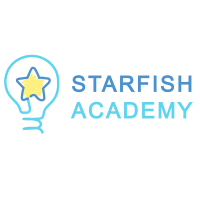
ยกระดับการเรียนรู้โรงเรียนทองผาภูมิวิทยา ด้วย 3 นวัตกรรมเทคโนโลยีด้านการศึกษา จาก Starfish Education

Starfish Education กับภารกิจที่ไม่ใช่แค่ให้เด็กเข้าถึงการศึกษา แต่ต้องเป็น Meaningful Education
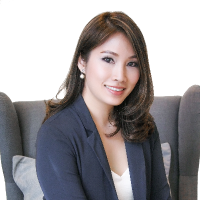
Related Courses





Micro Learning การฟื้นฟูภาวะถดถอยด้วยการช่วยเหลือผู้เรียน
การเรียนรู้ที่ถดถอยจะหายไป หากได้รับการสนับสนุนองค์ความรู้จากผู้มีความชำนาญ และการสร้างความร่วมมือผ่านการเรียนรู้ของคณะ ...

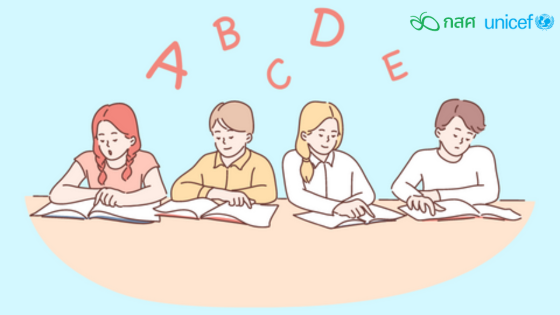

Micro Learning การฟื้นฟูภาวะถดถอยด้วยการช่วยเหลือผู้เรียน




Micro Learning เทคนิคการดูแลสุขภาพกาย ป.1-3
การฝึกการเคลื่อนไหวขั้นพื้นฐานในวัยเด็กเป็นสิ่งจำเป็น ซึ่งเป็นช่วงเวลาที่สำคัญสำหรับการวางพื้นฐานที่ถูกต้อง นำไปสู่พัฒนาการด้านร่างก ...

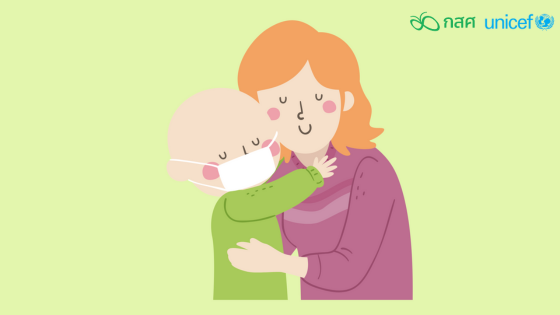

Micro Learning เทคนิคการดูแลสุขภาพกาย ป.1-3




Micro Learning เทคนิคการดูแลสุขภาพกาย ป.4-6
การเสริมสร้างสมรรถภาพทางกายที่ดีจากภายในสู่ภายนอก ควรทำควบคู่ไปกับการรับประทานอาหารที่มีประโยชน์และพักผ่อนให้เพียงพอ

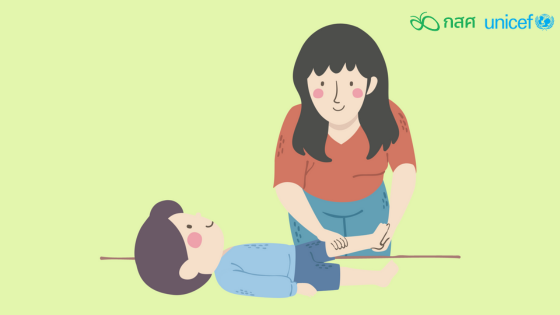

Micro Learning เทคนิคการดูแลสุขภาพกาย ป.4-6




เทคนิคสอนภาษาไทยแบบ Active Learning เพื่อวิทยฐานะ (PA) ฉบับครูมัธยม
การสอนภาษาไทยผ่านกระบวนการ Active Learning เป็นกระบวนการเรียนรู้ที่เน้นให้ผู้เรียนมีส่วนร่วมในกิจกรรมหลากหลายรูปแ ...



เทคนิคสอนภาษาไทยแบบ Active Learning เพื่อวิทยฐานะ (PA) ฉบับครูมัธยม
Related Videos

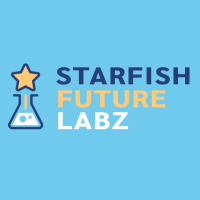
พื้นที่แห่งการเรียนรู้สู่ศตวรรษที่ 21

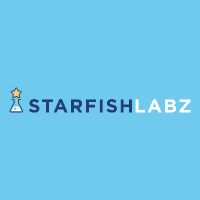
ประสานความร่วมมือ ก้าวไปสู่ความสมบูรณ์แบบและมีคุณภาพ ส่งเสริมการมีส่วนร่วมของทุกภาคส่วน

